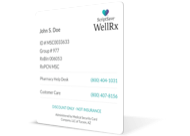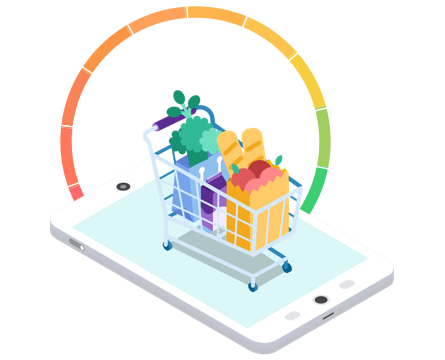Copyright 2024
Medical Security Card Company, LLC
All Rights Reserved
WellRx will never sell your personal information. Period. By signing up I agree to WellRx's terms of use and privacy policy.
By Jacquelyn Buffo, MS, LPC, CAADC
August 04, 2023
When you reflect three years to the year 2020, words like quarantine, social distancing, social isolating, and stay-at-home orders probably come to mind. You may remember a shortage of toilet paper and bottled water, feelings of fear and uncertainty, and an almost immediate change to your daily routine. Today, we will take a look back at the transformative last three years to gain insight on the detrimental impact COVID-19 has had and explore whether COVID-19 has resulted in positive changes.
It is largely beneficial to have an idea of the timeline of the Coronavirus’s progression. When you think back to “COVID times,” you probably think of late winter or early spring of 2020. What may surprise you is that the virus actually garnered attention in China in December 2019. Here’s what we know about the timeline of the Coronavirus, which has been summarized. If you would like a more detailed timeline you can visit the Centers for Disease Control and Prevention (CDC).
The most recent development is the end of the COVID-19 Public Health Emergency Act that expired on May 11, 2023, as a result of a decline in the number of COVID deaths since 2021 (95%) and a 91% reduction in COVID hospitalizations.
COVID has inherently changed the landscape of our lives. Some of us lost loved ones to the deadly virus, others may have lost their jobs, and others may have experienced physical and mental health challenges as a result of the pandemic.
As a result of the global pandemic:
It can be difficult to find a silver lining in a pandemic that has taken the lives of millions of people across the world. However, finding the positives (no matter how small) can help us tolerate a very challenging situation, such as a global pandemic.
One of the biggest changes that has come as a result of COVID-19 is the way we connect with others and conduct business. COVID showed that many of us can complete our jobs remotely which, for many of us, may mean a better work-life balance, less money spent on gas, and less stress related to travel time and traffic. In fact, from 2019-2021, the number of people in the United States who worked from home tripled from 9 million people to 27.6 million people.
COVID-19 forced us to take inventory of what is important in life. We used the power of technology and social media to stay connected with loved ones we couldn’t see. Many people made lifestyle changes as a result of the pandemic and focused on increasing pleasant activities through the development of new hobbies and pursuits.
As a result of the stay-at-home orders, there weren’t as many people driving their vehicles as in pre-pandemic times. As a result, fewer travelers meant less carbon dioxide emission and fewer injuries as a result of driving, and it allowed our Earth to get much-needed rest. This rest supported natural vegetation across the globe.
COVID-19 brought about many challenges that many of us are still facing today. If you are one of the many people who noticed an increase in feelings of anxiety or depression as a result of COVID-19, you are not alone. Research shows that in the initial year of the pandemic, incidents of anxiety and depression increased by 25% across the world. This is believed to be a result of many factors including an increase in stress related to social isolation, financial and occupational stress, and worry over the safety and well-being of loved ones.
As a result of the increase in mental health disorders across the world, the World Health Organization and other agencies have invested resources to improve access to mental health care. There has been a recent emphasis on the importance of mental health and a surge of online mental health platforms that help to make accessing mental healthcare easier.
If you are one of the many people struggling with your mental health, talk to your doctor. Your doctor can work with you to create a treatment plan that can address your needs or your doctor can refer you to a mental health professional who can. If medication is part of your treatment plan, ScriptSave WellRx offers a free prescription savings card that can help save you up to 80% on your medications. Most people who use the discount savings card save around 65%.
Jacquelyn Buffo began writing at the age of 10 when she won a county-wide essay contest explaining why her mother is worth her weight in gold. Since that time, she has written for several newspapers and a health and wellness blog. Her education and experience is in mental health and addiction. She is a licensed counselor and currently provides therapeutic services on an outpatient basis. Her counseling and substance abuse experience includes inpatient residential, in-home, and early recovery counseling. She is a certified addiction specialist and is working on obtaining her certification in Dialectical Behavioral Therapy. She also specializes in working with pregnant and post-partum women and has received advanced training on women's health.
Resources:

For your convenience, use the ScriptSave® WellRx mobile app. Now savings are well in hand, right at the pharmacy counter. Save on your family's prescription medicines.
Learn More
Your choice. Get a ScriptSave WellRx Savings Card. Or Download the free mobile app from the App Store or Google Play Store
Get A Card
ScriptSave WellRx Grocery Guidance leverages leading-edge nutritional data science to help you know which food products on your grocery store shelf are truly good for YOU.
Healthy Foods For YouTags:

November 07, 2024

October 23, 2024

May 07, 2024
You need to log into the site to use this feature
This feature requires registration. Sign up or log in to your free WellRx account to gain access to this and other tools to help make managing your medications and wellness easier.
Benefits Include:
 Store & manage your medication list
Store & manage your medication list
 Medication pricing updates
Medication pricing updates
 Medication information
Medication information
 Pill & refill reminders
Pill & refill reminders
 Medication journal & mood log
Medication journal & mood log
This feature requires registration. Sign up or log in to your free WellRx account to gain access to this and other tools to help make managing your medications and wellness easier.
Benefits Include:
 Store & manage your medication list
Store & manage your medication list
 Medication pricing updates
Medication pricing updates
 Medication information
Medication information
 Pill & refill reminders
Pill & refill reminders
 Medication journal & mood log
Medication journal & mood log
You will be redirected to your program in 5 seconds.
Our Terms and Conditions and Privacy Policy have recently been updated.
By declining you will be logged out of your account